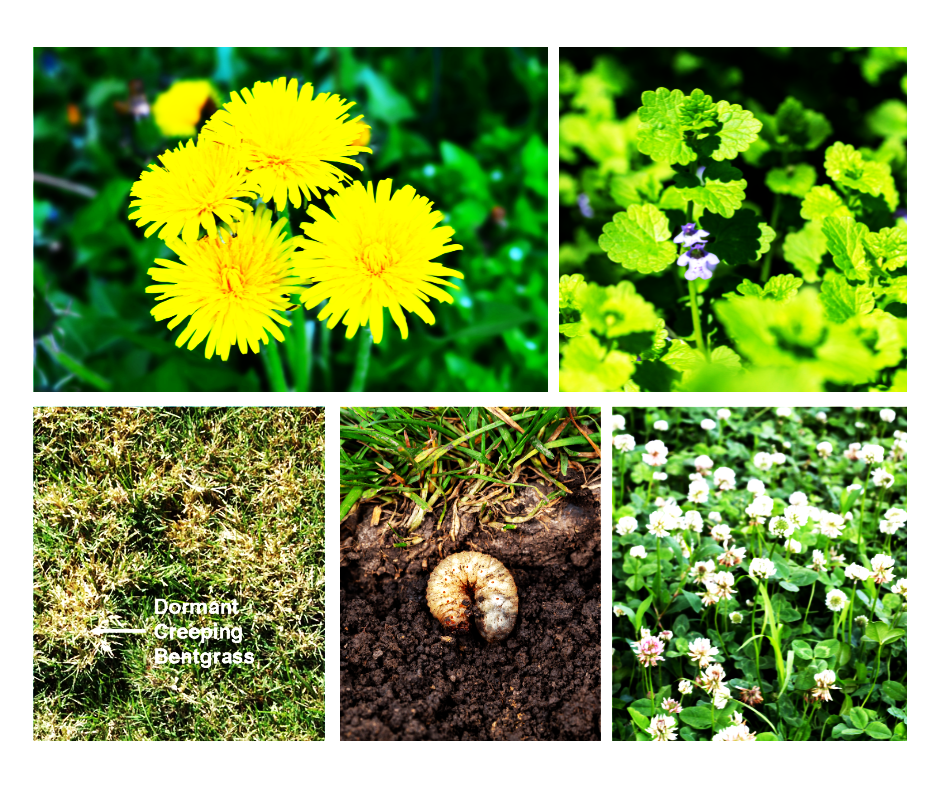The Lawn Ranger Returns … but timing is everything

Yesterday, when planting some onion sets with 40 K-2 students, several of them were more interested in picking dandelions than the task at hand. But that was OK. Seeing today’s youth engaging in any nature activity is positive in my book. I am sure most of you reading this also picked dandelions when you were a small fry.
The part I am sure most of you didn’t need to do was ask an adult what they were. But that is OK, too. You can be 3, 33 or 103, and I am happy to answer any gardening question about anything. But then the other question came. “Miss Nancy, isn’t this the wish plant?” I said, of course. When the flower turns to a white puffball, you blow it, and the wishes of a hundred dandelion seeds comes true!
But do you need to care about those dandelions, creeping Charlie, violets, clover popping up in your lawn? Let me tell you, the times, they are a changin,’ my friend. The pristine lawn ranger’s goal of the perfect monoculture of Kentucky bluegrass blades, all standing at uninterrupted attention, isn’t the goal of many homeowners today.
If the above “perfect lawn” description is your goal, that is fine, too. I can give you every solution, from the organic one — which in the 1960s was many of our main jobs — an 8-year-old equipped with a bushel basket and their trusty dandelion picker. Or if you are more of a better living through chemical science, I can give you those recommendations, too.
But it will always be, first identify the problem. The 16-year-old “horticulturist” at the big box store, may give you a weed killer for a bug problem. Not their fault though, because yesterday they were a plumbing specialist, and this afternoon, they will be an expert in carpet installation.
While I am mentioning going to the store, you should also not take it as a signal to apply what you buy today, just because it is on sale. So many homeowners reach out to me after they have applied their grub control, only to learn that the best time of application here in Will County, depending on the product, is the week of July 4th; Not April 24th. You apply season-long grub killer now, and by late July when the grubs emerge, that chemical is but a memory. It has been diluted away by the microbes in the soil and the rains we have had since you applied it back in April.
But who could blame a homeowner? The grub killer was on sale this week, and when you got to the store, a 3-foot cardboard grub was hanging from the ceiling. So, what should you do?
Google or reach out to us, University of Illinois Extension. I am only an email or phone call away. [email protected] 815 727 9296.
With us, you get research-based information with a wide range of practical solutions (we call it Integrated Pest Management or IPM). And most importantly, the right timing to get the best results.
So back to the idea of what your personal ideal lawn should look like. There has been a strong movement to support pollinators, and somewhat away from the idea that the only bad weed is a dead one. Actually, who determines that plants are “bad” anyway? We do.
So, in support of pollinators, and the use of “think first, spray later, or maybe never,” the “bee lawn” idea was born. Instead of looking at the yellow pompom of dandelion flowers as enemies, think of them as restaurants; this goes for all the weeds that bloom in the spring. These may be some of the only flowers available for our pollinators (besides tree flowers). Particularly in this year of early, early warm weather.
The bees and other pollinators are out, and need a great deal of energy, which is your all-you-can eat, weed buffet. I also prefer to call it not a weedy lawn, but a “perennial floral groundcover.” The choice is yours.
If you do prefer to treat for weeds, be sure you are using the right stuff and at the right time. The label is not only the law, but it provides all the information you need. No company wants you to use their product and get the least success.
Crabgrass preventer doesn’t work on quackgrass or creeping bentgrass. And do you really have crabgrass anyway? If you see patches of wide bladed grasses right now, guess what? It isn’t crabgrass. Crabgrass doesn’t germinate until the soil temps are above 55 degrees for 10 days straight. We aren’t even there yet.
If you have these patches, it is most likely quackgrass. I often wonder why people get so obsessed with wiping out the flowering weeds, when the real menace to a great lawn that can slowly become your lawn, if not controlled, is quackgrass.
And the grassy weeds do not have a weed and feed type control where you can broadcast a granular across the whole lawn, and it just kills the undesirable grassy weeds. There are a few products out there that can help with early starts of small quack and creeping bent. But for big patches, it is dig out or a total herbicide (like RoundUp or KleenUp — products containing the active ingredient glyphosate) that kills anything green it is sprayed on — with the beauty that it kills to the root.
The three most important things when dealing with lawn issues are: proper identification of the issue, deciding whether it is a problem at all, and which option (and when) is the best way to find optimum success.
Illinois Extension has a great website dedicated to everything lawn at http://extension.uiuc.edu/lawns And as always if you do not use a computer, just contact me at 815 727 9296 and we can send you any handout you need.